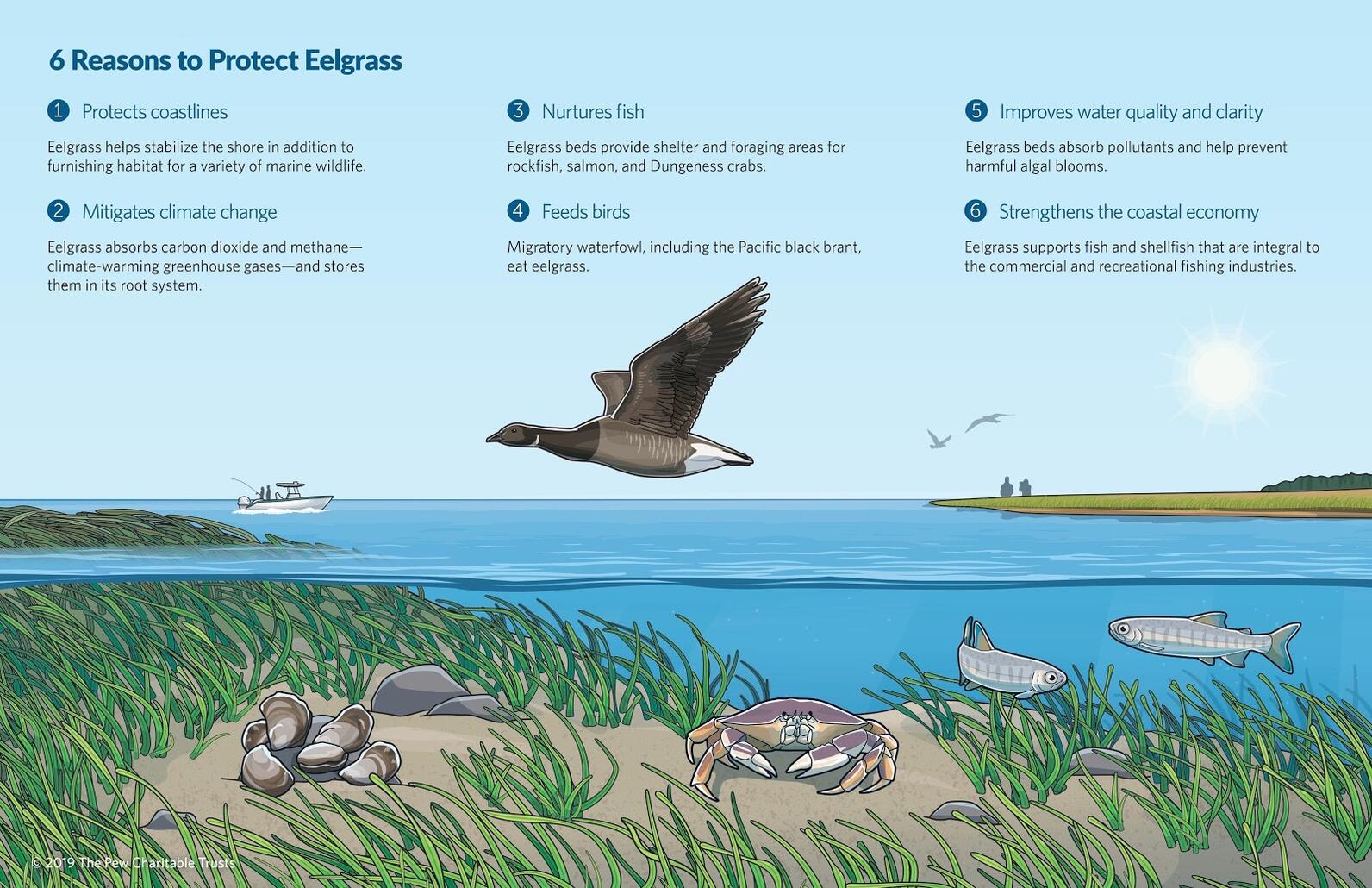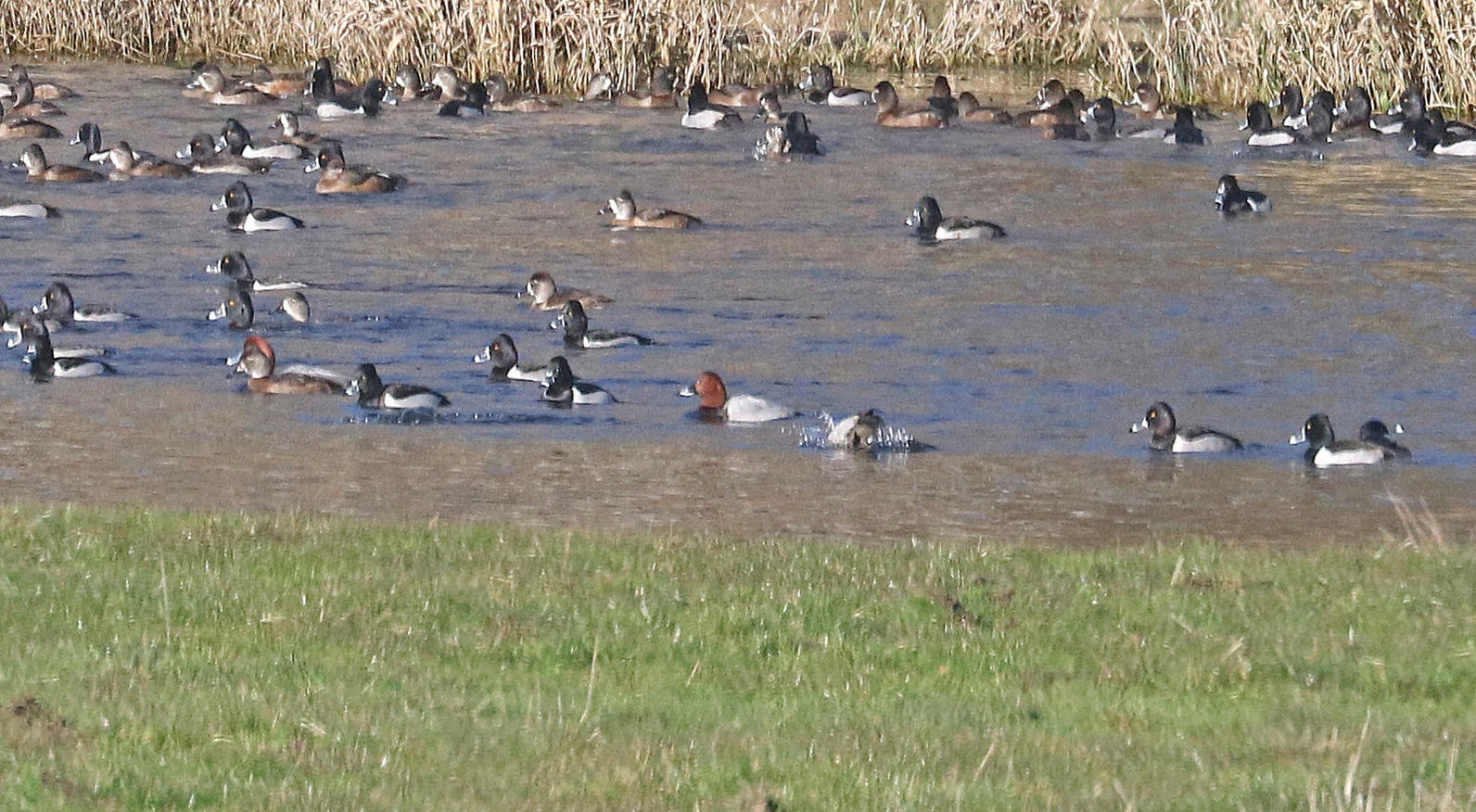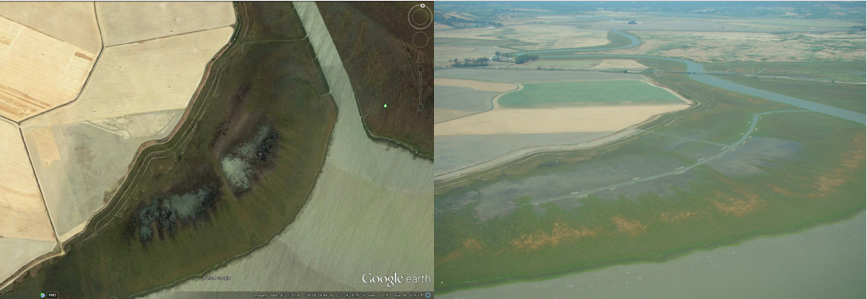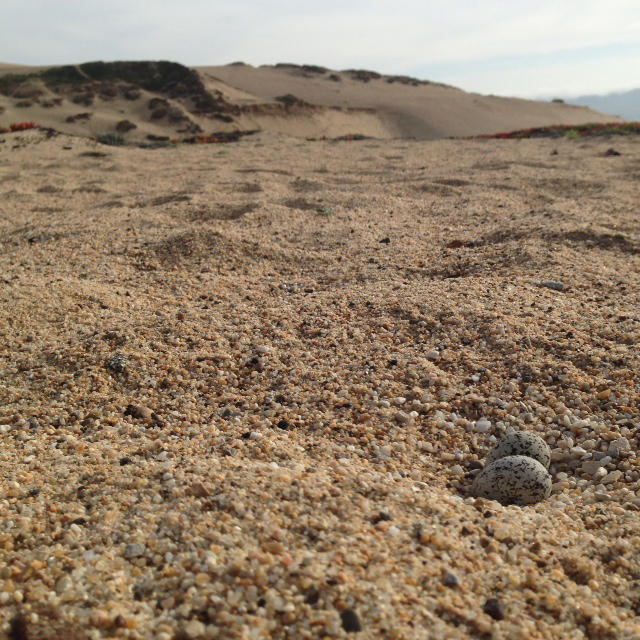Lesser Scaup
Latin: Aythya affinis
An important food source for waterbirds.
Eelgrass Photo: Eric Heupel
No matter where you live, chances are you and your family are benefiting from eelgrass. This beautiful plant provides dozens of ecosystem services and provides essential habitat for coastal birds.
Eelgrass on the U.S. West Coast is a member of the family of sea grasses called Zosteraceae and belongs to the higher taxonomic group of flowering plants called angisosperms. The blades of eelgrass are similar to those found in common grass species and depending on the zone, these could grow up to 4 feet in length.
As a crucial nursery habitat for crabs, salmon, and other wildlife, eelgrass boosts the economies of our coastal communities through fisheries and tourism. Healthy eelgrass beds also clean and filter water, absorb climate-warming carbon, and act as natural buffers to protect the coastline during storms.
Within San Francisco Estuary, Richardson Bay stands out as a particularly unique location for eelgrass restoration. It harbors the second-largest extant eelgrass bed in the estuary, and plants with the most genetic diversity of six beds sampled. Further, a model of environmental conditions in the estuary has identified Richardson Bay as the area with the greatest area suitable for restoration (Merkel and Associates 2004). Hence, Richardson Bay is highly valued both for its existing eelgrass resources and its potential for restoration.
Read All About Eelgrass in this downloadable fact sheet in English and Spanish.

What is eelgrass?
What animals rely on eelgrass?
Why should you care about eelgrass?
Audubon is advancing nature-based strategies to help coastline communities weather the impacts of climate change.
The Richardson Bay Audubon Center & Sanctuary is a remarkable slice of nature on the shores of the San Francisco Bay.
San Francisco Bay is an ecologically rich estuary, significant for its large eelgrass beds, spawning areas for Pacific herring, and tens of thousands of wintering waterbirds and other wildlife. Each winter, waterbirds migrate to the waters in and around the Richardson Bay Wildlife Sanctuary to rest in the calm waters and feast on herring.
Audubon California is committed to protecting the birds and habitat of the San Francisco Bay.
Restoring the vital native plant requires hard work and cold water.

A extremely rare appearance of a Common Pochard in Humboldt Bay has drawn flocks of birders to the area. But some have expressed concern that duck hunters will shoot the bird as a prize. Audubon California policy director, Michael Lynes, offers his insight in the Sacramento Bee:
"My argument for why I hope someone doesn’t kill this duck is this: It would be nice if hundreds of people could enjoy this rare event, rather than just the one person who could shoot it.”
Arguing that a proposed 40-acre development in prime Western Snowy Plover habitat presents too big a threat to the threatened bird, Audubon California today joined with other environmental groups to threaten legal action to stop the project unless proponents incorporate specific actions to protect the birds. The notice was filed by the Center for Biological Diversity, Sierra Club, National Audubon Society, and the Monterey Audubon Society.
The U.S. Fish and Wildlife Service has repeatedly criticized the development and argued that “take” — that is, the death or injury — of western snowy plovers will likely result from construction and use of the resort. The project has been working its way through the approval process since 1998.
“Enough is enough,” said Andrea Jones, director of bird conservation for Audubon California. “We are long past the time when putting a development on our sandy beaches and dunes makes any sense. Western Snowy Plovers are already listed under the Endangered Species Act because of habitat loss, and this project specifically takes away more habitat where the birds have been known to breed, forage, and spend the winter.”
Today’s legal notice warns that if the developer fails to follow the course laid out by the Fish and Wildlife Service and the California Coastal Commission — to prepare a “habitat conservation plan” in support of an application for an incidental-take permit — the developer will be subject to litigation under the Endangered Species Act for harming the rare and vanishing birds.

Courtney Gutman got an aerial view of the progress made at our Sonoma Creek enhancement project which we completed in November. Gutman is our restoration project manager from the Richardson Bay Center & Sanctuary and oversaw construction on the 400-acre tidal marsh in the greater San Francisco Bay.
Within weeks of finishing the construction, the team could already see a myriad of vegetation and wildlife coming back to the area, including a variety of small shorebirds and pickleweed, a native succulent that absorbs saltwater.
The Sonoma Creek enhancement is the first project of its kind on a pre-existing marsh. Before the project, sea water was able to wash in during high tide, but with no way for it to drain, stagnant pools became perfect breeding ground for mosquitoes and an imperfect breeding ground for plant life and other animals. To solve this problem, we dug canals to help with drainage of the area. Natural channels can now form in areas that were once stagnant, contributing to a healthier marshland. We also moved about 30,000 cubic yards of soil to create a transition ramp that slows storm surges and gives animals somewhere to go when the tide gets too high.
Gutman says people are starting to see estuaries beyond their importance for wildlife, plants, and biodiversity.
“Now on top of that we’re seeing how important they are for combatting climate change. They’re truly our natural barriers for rising sea levels,” she says.
For more information about the project, visit our Sonoma Creek page.

Our good friends at Monterey Audubon today help Los Angeles Times columnist Steve Lopez kick off his tour of the California Coast, through which he intends to highlight the ongoing controversy involving the California Coastal Commission. In recent articles, Lopez has shed light on a number of instances where the Commission seemed to be holding the interests of developers above those of coastal protection, and his visit to Monterey is another example. In 2014, the Coastal Commission gave initial approval to a proposed "ecoresort" on nearby Sand City, which numerous public and private agencies said would definitely interfere with endangered Western Snowy Plovers.
Our newsletter is fun way to get our latest stories and important conservation updates from across the state.
Help secure the future for birds at risk from climate change, habitat loss and other threats. Your support will power our science, education, advocacy and on-the-ground conservation efforts.
California is a global biodiversity hotspots, with one of the greatest concentrations of living species on Earth.